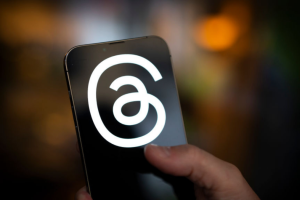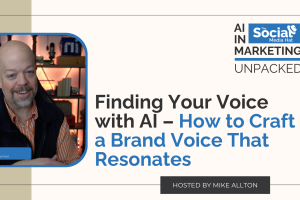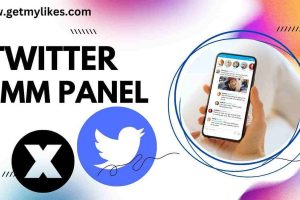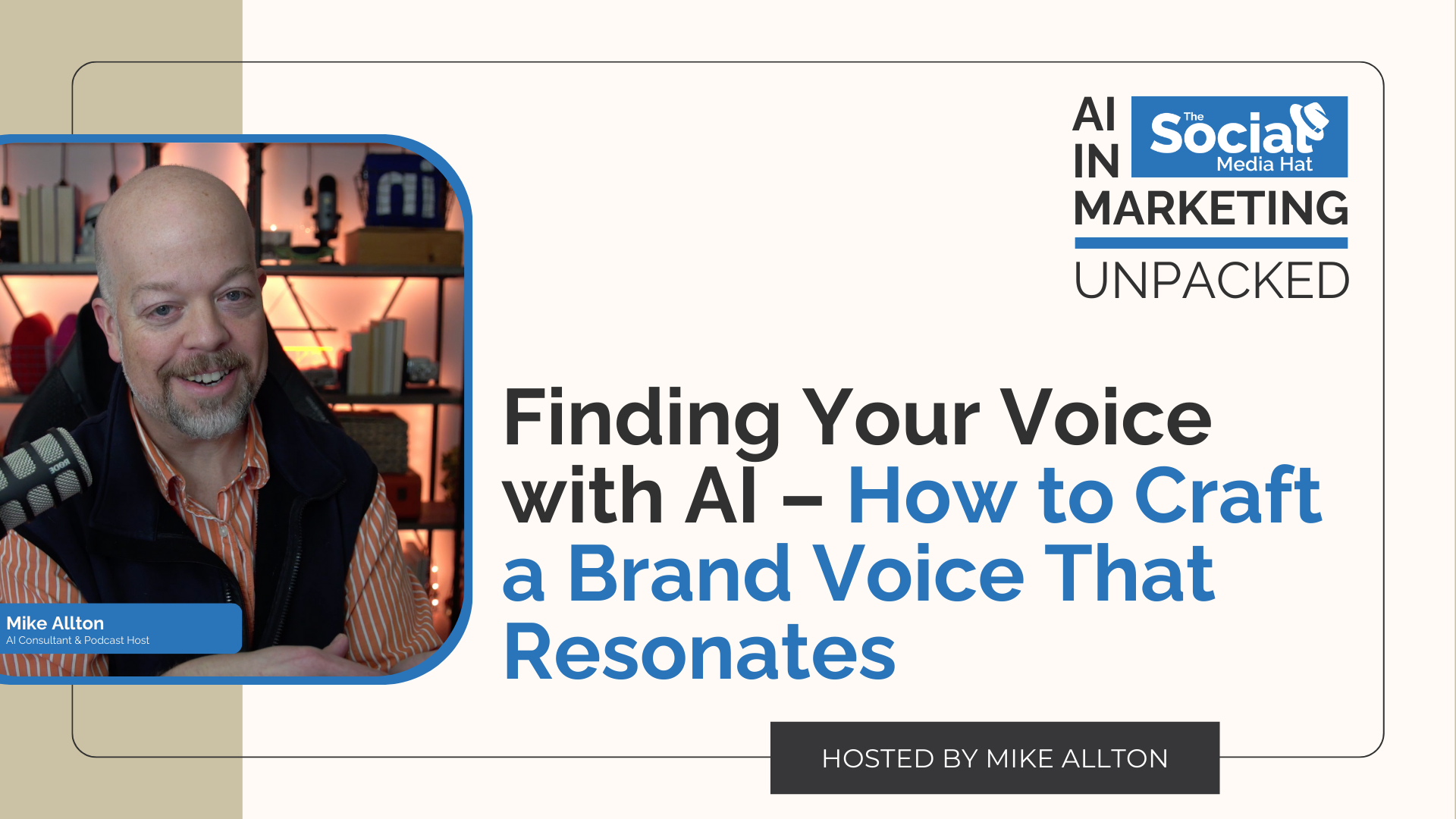Reading Time: 8 minutes
Have you ever read a piece of content from a brand—maybe a blog, a social post, or even an email—and thought, “This just doesn’t sound right?” Maybe it felt robotic, overly generic, or like it could’ve been written by anyone. Here’s the reality: with the rise of AI tools in content creation, this is happening more often than ever. And it’s not just small businesses struggling to get it right—it’s big brands too. The problem? They haven’t defined their voice, and they’re expecting AI to read their minds.
When your content doesn’t sound like you, it confuses your audience. It erodes trust and makes it harder to build lasting connections. And when AI gets it wrong—whether that’s a dry, lifeless tone or something wildly inconsistent—it doesn’t just fall flat. It can actively damage your brand. Think about it: every piece of content your audience sees shapes how they perceive you. If you don’t have a clear, consistent voice, you risk blending into the noise—or worse, alienating the people you’re trying to reach.
But here’s the good news: with the right approach, you can create a voice that’s unmistakably yours, and—here’s the exciting part—you can teach AI to scale it. Today, we’re going to dive into why your brand voice matters, how to define it in collaboration with AI, and how to create custom instructions so that every blog, social post, and email feels authentically you. I’ll even share my own experience building a Custom GPT to reflect my voice and style, so you can see exactly how it’s done.
LISTEN TO AI IN MARKETING: UNPACKED:
WATCH AI IN MARKETING: UNPACKED:
AI in Marketing: Unpacked host Mike Allton talked about:
✨ Why Your Brand Voice is Essential: Listeners will learn why a consistent and well-defined brand voice is critical for building trust, standing out, and ensuring that their audience connects with their content—whether it’s created by them or an AI.
✨ How to Define and Document Your Unique Voice: Listeners will get actionable insights into defining their brand’s tone, language, and style, including tips on identifying key traits and avoiding common pitfalls. Plus, they’ll discover how to translate that voice into clear guidelines that can be used across all their content.
✨ How to Collaborate with AI to Scale Your Voice: Listeners will walk away with practical steps for teaching AI tools like ChatGPT or Magai to reflect their unique voice. They’ll learn how to create custom instructions, refine AI outputs, and use these tools to save time while maintaining authenticity.
Learn more about Mike Allton
Resources & Brands mentioned in this episode
Full Transcript
(lightly edited)
Finding Your Voice with AI – How to Craft a Brand Voice That Resonates
[00:00:00] Mike Allton: Here’s the bold truth. When AI generated content feels off, it’s not the AI’s fault. It’s yours. And while that might sound harsh, it’s actually empowering. Why? Because it means you can fix it. This episode is all about that fix. It’s about understanding why your brand voice is your most valuable communication asset and how to define it so clearly that even AI can wield it like an expert.
We’ll dive into what makes a brand voice powerful, where it matters most, and how you can teach AI tools like ChatGPT to reflect it flawlessly. And if you’re wondering what this process looks like, I’ll pull back the curtain and share how I built my own custom GPT, what worked, what didn’t, and the surprising lessons I learned on the way.
Welcome to AI in Marketing: Unpacked, where we simplify AI for impactful marketing. I’m your host, Mike Allton here to guide you through the world of artificial intelligence and its transformative impact on marketing strategies. Each episode, we’ll break down AI concepts into manageable insights and explore practical applications that can supercharge your marketing efforts.
Whether you’re an experienced marketer just starting to explore the potential of AI, this podcast will equip you with the knowledge and tools you need to succeed. So tune in and let’s unlock the power of AI together.
Greetings program. Welcome back to AI in Marketing: Unpacked where I’ve selfishly used this time to pick the brains of experts at keeping up with and integrating or layering artificial intelligence into social media, content, advertising, search, and all these other areas of digital marketing. You get to learn to subscribe to be shown how to prepare yourself and your brand for this AI revolution and come out ahead that today we’ve got a special bonus solo episode for you talking about voice and setting up a custom voice GPT.
And just think about the last time you read a blog post or an email and thought. This doesn’t sound like them. Maybe the tone was too casual for what should have been a serious announcement, or maybe it swung the other way, stiff and corporate. When the brand is usually friendly and approachable. Here’s the bold truth.
When AI generated content feels off, it’s not the AI’s fault. It’s yours. And while that might sound harsh. It’s actually empowering. Why? Because it means you can fix it. This episode is all about that fix. It’s about understanding why your brand voice is your most valuable communication asset and how to define it so clearly that even AI can wield it like an expert.
We’ll dive into what makes a brand voice powerful, where it matters most, and how you can teach AI tools like chat GPT to reflect it flawlessly. And if you’re wondering what this process looks like, I’ll pull back the curtain and share how I built my own custom GPT, what worked, what didn’t, and the surprising lessons I learned on the way.
But before we jump in, let me ask you this. How well could you describe your brand’s voice right now? If you’re not sure, or if you’ve never even thought about it, don’t worry. By the end of this episode, I’ll be You’ll have the tools to define it, teach it to AI and use it to connect with your audience like never before.
So let’s get started and let’s start with the big picture. What is brand voice and why does it matter? Imagine you’re meeting a new friend. You get to know their personality, their quirks, the way they speak. And that’s what makes them memorable. Now imagine that every time you talk to them, they sound completely different.
One day they’re bubbly and excited. The next. They’re monotone and detached. It’s confusing, right? You start to lose trust because you don’t know who they really are. That’s exactly what happens when a brand’s voice is inconsistent. Your brand voice is how your audience recognizes and connects with you.
It’s not just about what you say. It’s about how you say it. You warm and conversational, bold and authoritative, playful and witty. This voice becomes the personality of your brand and it’s what builds trust, loyalty, and recognition over time. Without it, your messaging becomes forgettable or worse, alienating.
Now, let’s bring AI into the mix. AI is a powerful tool, but it doesn’t inherently understand your brand voice. It’s like handing a microphone to someone who’s never heard you speak and asking them to represent you. Without clear guidance, the results will feel generic or off brand. But when you take the time to define your voice and teach it to AI, it becomes an extension of your brand, capable of scaling your message with precision and consistency.
Let’s think of two real world scenarios. Scenarios, take a brand like Wendy’s, known for its sharp, snarky tone on Twitter. Imagine if their tweets suddenly became overly polite and formal, it would completely throw their audience off. On the flip side, think of a financial institution like Fidelity. If their messaging became casual or irreverent, their credibility would take a hit.
These examples show why your voice isn’t just nice to have, it’s the foundation of how your audience perceives you. When I set out to create my custom GPT, I had a clear goal. I didn’t just want it to write good content. I wanted it to write my content. That meant capturing the nuances of my voice, warm, conversational, little witty, and full of analogies drawn from history, Star Wars, and actionable marketing advice.
But defining that voice, Was only half the battle. The real challenge was teaching AI to replicate it. If you’ve never defined your brand voice before, start here. Imagine your brand as a person. How would you describe their personality in three to five words? For me, the key traits were approachable, insightful, witty, and action oriented.
These adjectives became the foundation of my voice, but defining what you don’t want is just as important. I knew I wanted to avoid jargon, Corporate speak and cliches like in today’s fast paced digital world. These boundaries helped me clarify exactly what my voice isn’t, which made it easier to guide the AI.
And once you define your voice, the next step is document it. This doesn’t have to be a long formal document. Start with a simple guide that includes your tone. Are you formal or casual, playful or serious? Language. What kinds of words or phrases do you use or avoid? And then some examples. You got to include some snippets of content that reflect your voice perfectly.
This document becomes your AI training manual. When I built my custom GPT, I fed it examples of my writing and included detailed notes on why those examples worked. I also tested it repeatedly, asking it to write social posts, blogs, and even podcast scripts with each test. I fine tuned the instructions until the results felt like me.
Your brand voice isn’t confined to one channel. It’s the thread that ties together every interaction your audience has with you. Think about your social media presence. It’s your tone consistent across platforms. Are your Instagram captions as aligned with your voice as your LinkedIn posts?
What about your customer support emails or automated chat bot responses? Every touch point is an opportunity to reinforce your brand. Or dilute it. Here’s an example. Let’s say you run a wellness brand that prides itself on being calm and supportive. Your Instagram posts use soothing language, but your customer support emails are curt and transactional.
That disconnect creates friction for your audience. Now imagine if every interaction, whether on social email, your website felt seamless and true to your voice, that’s the level of consistency we’re aiming for. And it’s where AI can make a huge impact. When you train AI on your voice, it becomes your secret weapon for scaling content without losing that personal touch need 10 variations of a social post?
AI can handle that. Want a blog draft that aligns perfectly with your ? AI’s got you. The key is giving clear, actual guidance up front. Teaching your voice to AI is like onboarding a new team member. If you don’t explain your expectations, you can’t blame them for getting it wrong. The same applies to AI. Start by providing detailed instructions that cover your tone, language, and preferred phrasing. For example, instead of saying, Write something engaging, try this. Write in a warm, conversational tone with references to Star Wars and actionable marketing tips. Testing is essential. When I first started training my custom GPT, I liked it to rewrite a LinkedIn post and then draft a podcast intro.
The initial results weren’t perfect, but that’s the beauty of this process. It’s iterative. Each time I refined the instructions, the outputs got closer to my ideal style. Over time, the AI became a powerful extension of my voice, capable of handling a variety of tasks while staying true to my brand. And your brand voice isn’t just a marketing tool.
It’s the cornerstone of how your audience connects with you. And in a world where AI is becoming integral to content creation, defining and teaching that voice is more important than ever. With the right guidance, AI can amplify your message and help you connect with your audience in ways you never thought possible.
If you’re ready to take your AI adoption to the next level, let’s talk. I offer AI consulting to brands to help define their voice, train their tools and implement these strategies effectively. Or if you’re looking for an immersive experience, join me at one of my two day AI bootcamps for hands on training, and that’ll transform how you use AI in your business.
I also have a link below to an entire episode I did on how to actually build a custom GPT. So if it’s your first time exploring that realm of AI. Check that out. Thanks for tuning in. And as always go find your voice and teach it to the galaxy. Welcome to the grid thanks for joining us on AI in Marketing: Unpacked. I hope today’s episode has inspired you and given you actionable insights to integrate AI into your marketing strategies. If you enjoyed the show, please subscribe on your favorite podcast platform and consider leaving a review. We’d love to hear your thoughts and answer any questions you might have.
Don’t forget to join us next time as we continue to simplify AI and help you make a real impact in your marketing efforts until then keep innovating and see just how far AI can take your marketing. Thank you for listening and have a fantastic day.

Related
Discover more from The Social Media Hat
Subscribe to get the latest posts sent to your email.










